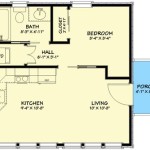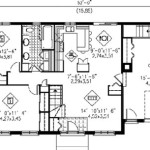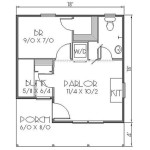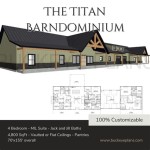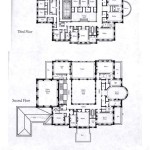One Story Colonial Home Plans: A Comprehensive Overview
Colonial architecture, a style that originated in the American colonies during the 17th and 18th centuries, continues to be a popular choice for homeowners today. While often associated with two-story designs, the colonial aesthetic can be successfully adapted to single-story homes, offering a blend of traditional charm and modern convenience. One story colonial home plans provide accessible living spaces, eliminating the need for stairs and creating a seamless flow throughout the house. This article explores the key characteristics, benefits, and considerations involved in choosing a one story colonial home plan.
The essence of colonial architecture lies in its symmetrical facade, simple rooflines, and classic detailing. When translated to a single-story design, these elements are reimagined to create a balanced and aesthetically pleasing home. The emphasis remains on functionality and efficiency, with well-defined spaces and practical layouts.
Key Characteristics of One Story Colonial Homes
Several distinguishing features define the one story colonial home. These elements are carefully incorporated into the design to maintain the integrity of the colonial style while accommodating the single-story structure.
Symmetrical Facade: This is perhaps the most recognizable characteristic of colonial architecture. A symmetrical facade means that the front of the house is visually balanced around a central point. This often involves a centrally located front door with an equal number of windows on either side. On a one-story home, this principle is particularly important in creating a sense of visual harmony and proportion. The symmetry extends to other architectural details, such as shutters, columns (if present), and even landscaping.
Simple Rooflines: Colonial homes typically feature gable or hip roofs with moderate slopes. These rooflines are functional and aesthetically pleasing, providing adequate drainage and contributing to the overall symmetry of the house. On a one story home, roof style choices can create different aesthetic and functional benefits. A gable roof is simpler and more cost-effective, while a hip roof offers greater wind resistance and a more sophisticated look. Dormers can be added to the roof to provide additional light and ventilation to attic spaces, if applicable.
Classic Detailing: Colonial homes are known for their understated elegance. Details such as window shutters, decorative crown molding, and simple door surrounds add character without being overly ornate. Shutters are often functional, providing protection from the elements, but can also be purely decorative, enhancing the visual appeal of the windows. Crown molding adds a touch of sophistication to the interior, while simple door surrounds create a focal point at each entryway. The choice of materials, such as wood or brick, also contributes to the overall colonial aesthetic.
Emphasis on Proportion: Maintaining proper proportions is crucial in a one story colonial home. The height of the walls, the size of the windows, and the overall footprint of the house must be carefully considered to create a balanced and visually appealing design. Too much of any single element will destroy the balance of the colonial style which relies on visual harmony. Horizontal lines, created by the roofline and window placement, can help to visually lengthen the house and create a sense of spaciousness. The use of landscaping can also enhance the proportions of the house, softening the lines and creating a welcoming atmosphere.
Traditional Materials: Colonial homes are often built with traditional materials such as brick, wood siding, and clapboard. These materials evoke a sense of history and authenticity. Brick is a durable and low-maintenance option, while wood siding provides a more rustic and natural look. Clapboard, a type of overlapping wood siding, is another popular choice for colonial homes. The choice of materials can also depend on the local climate and building codes.
Benefits of Choosing a One Story Colonial Home Plan
Opting for a one story colonial home plan offers several advantages, appealing to a wide range of homeowners.
Accessibility and Convenience: The absence of stairs makes one story homes ideal for individuals with mobility issues, families with young children, and those planning to age in place. All living spaces are located on a single level, making it easier to navigate the house and reducing the risk of falls. This is a significant advantage for people with disabilities or those who anticipate future mobility challenges. One-level living also simplifies tasks such as laundry and grocery shopping, as there is no need to carry heavy items up and down stairs.
Open Floor Plans: While traditional colonial homes often featured separate rooms, modern one story colonial plans often incorporate open floor plans, creating a more spacious and social atmosphere. The kitchen, living room, and dining room may be combined into a single, open area, allowing for easy interaction and entertaining. This open layout also provides greater flexibility in furniture arrangement and decorating. However, the open floor plans have to be carefully designed to maintain defined spaces within the larger area.
Easier Maintenance: With all living spaces on a single level, maintenance and cleaning become simpler. Exterior maintenance, such as painting and gutter cleaning, is also easier to manage on a one story home. Reaching the roof and upper windows is less challenging, reducing the need for specialized equipment or professional services. Interior cleaning is also more efficient, as there are no stairs to vacuum or mop. One story living can reduce stress and effort for homeowners on maintaining their home.
Energy Efficiency: One story homes can be more energy-efficient than two-story homes, as there is less surface area exposed to the elements. This can result in lower heating and cooling costs. Proper insulation, energy-efficient windows, and a well-sealed building envelope can further enhance the energy efficiency of a one story home. Single-story homes also benefit from natural air circulation and ventilation, which helps to regulate the temperature and reduce reliance on air conditioning. The simpler design often simplifies the installation of solar panels or other renewable energy systems to produce electricity.
Design Flexibility: While adhering to the colonial aesthetic, one story plans offer flexibility in terms of layout and customization. Homeowners can tailor the floor plan to their specific needs and preferences. Additional bedrooms, bathrooms, or a home office can be easily incorporated into the design. The size and shape of the house can also be adjusted to fit the lot and maximize the available space. Customization opens the possibility of adding a large porch or patio to expand living space. The design flexibility also can create accessibility adjustments for personal needs if desired.
Considerations When Choosing a One Story Colonial Home Plan
While one story colonial homes offer numerous benefits, it's important to consider certain factors before making a decision.
Lot Size: One story homes typically require a larger lot than two-story homes with the same square footage. This is because all living spaces are spread out on a single level, requiring a wider and deeper footprint. Before choosing a one story plan, it's important to ensure that the lot is large enough to accommodate the house and any desired landscaping or outdoor features. The lot size will also determine the orientation of the house and its impact on sunlight and privacy. It is important to consider local zoning restrictions and building codes about the maximum building footprint.
Privacy: In a one story home, privacy can be a concern if the house is located close to neighboring properties or roads. Strategic landscaping can help to shield the house from view and create a sense of seclusion. Fences, hedges, and trees can be used to create a buffer zone around the property. Window placement should also be carefully considered to minimize overlooking from neighboring houses or streets. Interior design is a factor to consider as well as room placement to maintain a higher sense of personal privacy.
Resale Value: While one story homes are generally desirable, their resale value can vary depending on the location and market conditions. In some areas, one story homes are highly sought after, particularly by retirees and families with young children. In other areas, two-story homes may be more prevalent and command higher prices. It's important to research the local real estate market and consult with a real estate professional to understand the potential resale value of a one story colonial home in a specific area. Market fluctuations are a consideration with any property, but a single story home has to be considered in light of local demand.
Cost: Building a one story home can sometimes be more expensive per square foot than building a two-story home. This is because one story homes require a larger foundation and roof, which can increase construction costs. However, the simpler construction and maintenance of a one story home can offset these costs over time. It's important to obtain detailed cost estimates from several builders before making a decision and to factor in the long-term costs of ownership. One story homes can also have a lower overall tax burden in some areas due to a lower total value assessment.
Layout Considerations: Careful planning is required to maximize space and functionality in a one story colonial home. Thoughtful layout design is crucial to avoid feeling cramped or confined. Open floor plans can help to create a sense of spaciousness, but it's important to define distinct zones for different activities. Proper storage solutions are also essential to minimize clutter and maximize usable space. One story homes need to have clear lines of sight to the exterior and access to natural light to avoid feeling enclosed.

1916 Single Story Modern Colonial Ladies Home Journal Walter Swindell Davis House Plans Sims How To Plan

Colonial House Plans Southern Floor

Plan 042h 0021 The House

Image Result For One Story Colonial Homes Style House Plans

Colonial Style House Plan 5 Beds 3 Baths 2705 Sq Ft 275 Eplans Com

House Plan 62072 Southern Style With 2603 Sq Ft 4 Bed 2 Bath

Plan 41463 Louisiana Style Home With 3 Car Garage And Outd

Stylish One Story House Plans Blog Eplans Com

Spanish Colonial Home Plans Sater Design Collection

Dream Single Story House Plans Customizable One Homes




